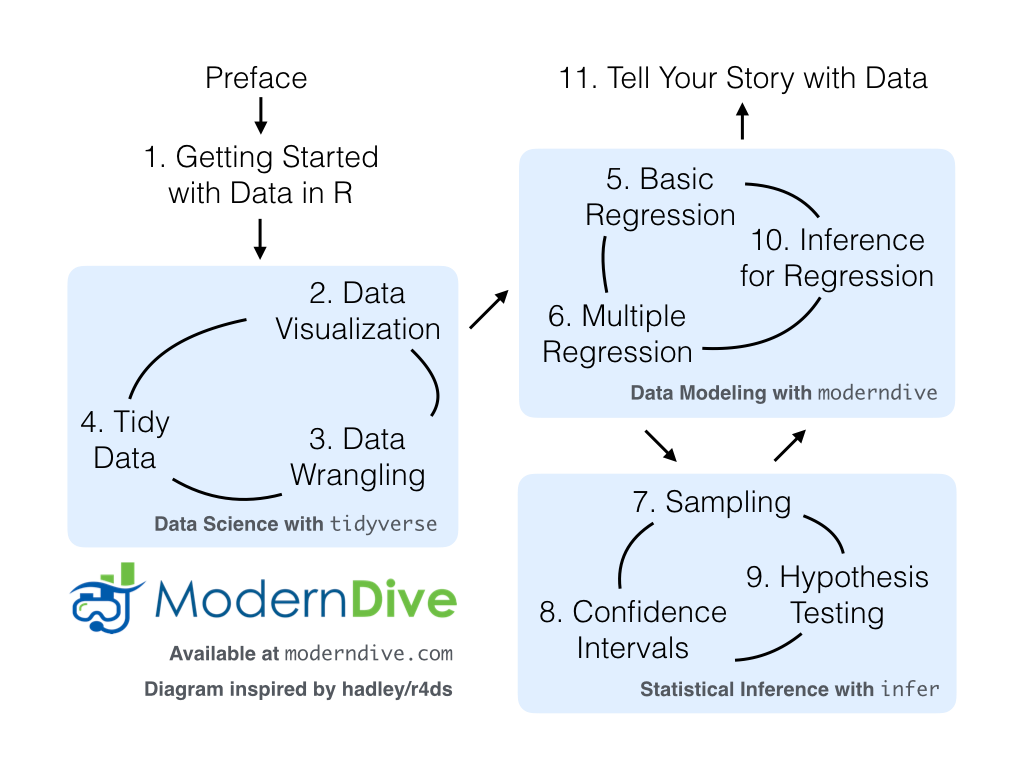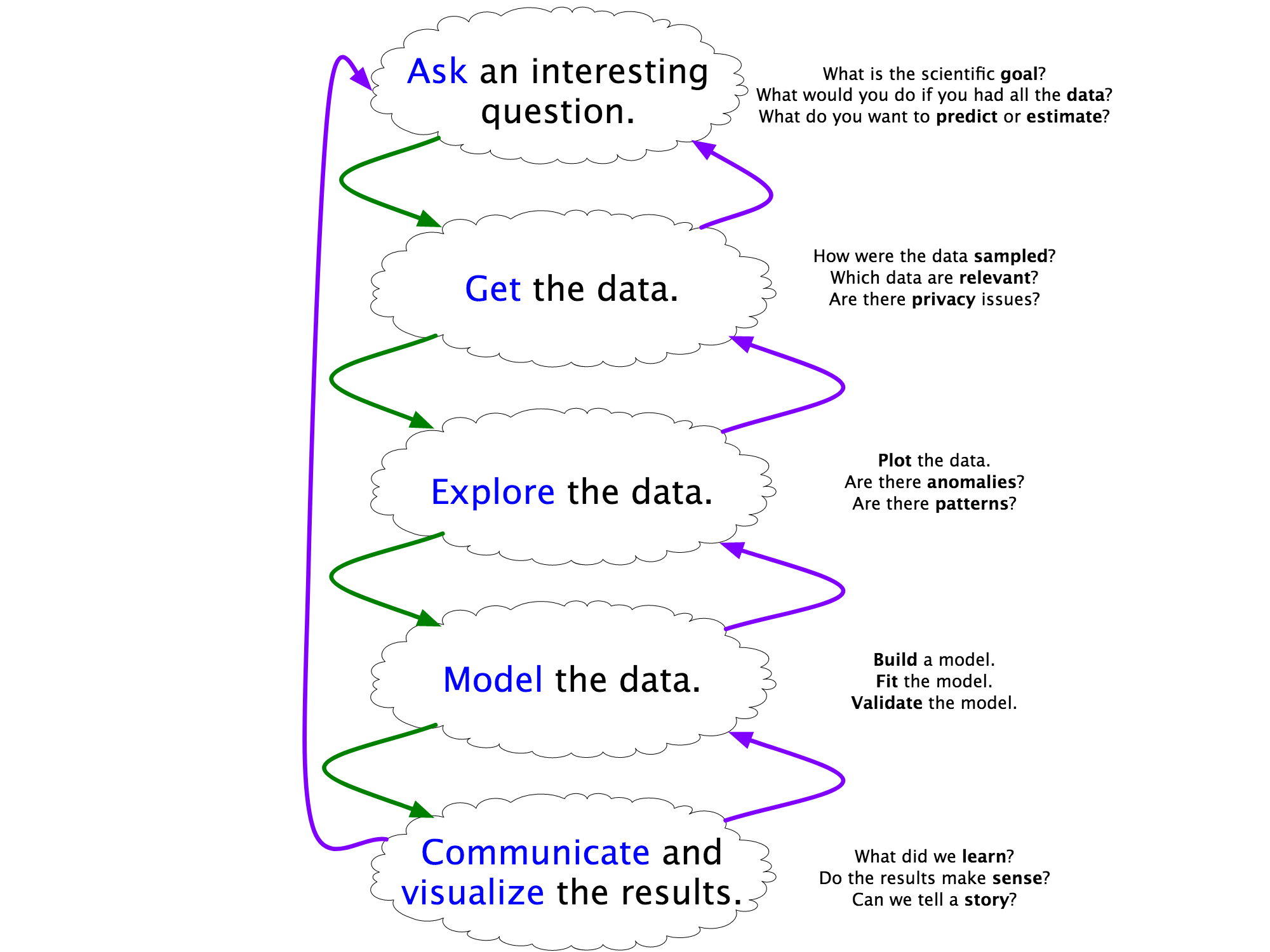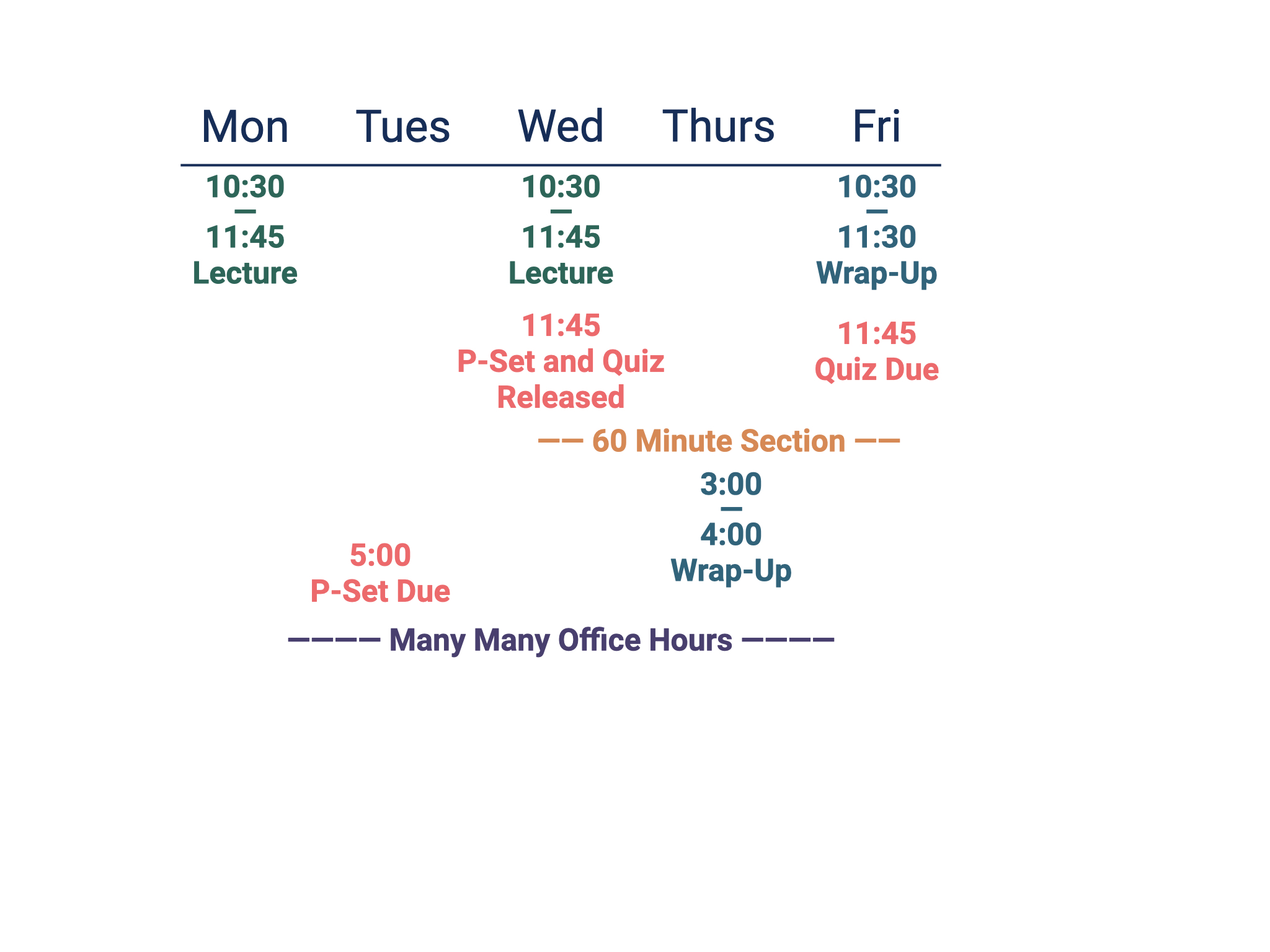[1] 4Main Components of RStudio Lay-Out


Computing in Stat 100
Kelly McConville
Stat 100
Week 2 | Fall 2023
Discuss course structure & goals (lecture, section, wrap-ups, office hours, assessments…)
Present important course policies (engagement, code of conduct, chatGPT, …)
Get started in RStudio and with Quarto documents





Not a strict set of guidelines.
General structure for extracting knowledge from data.
Consider iteration, context, reproduciblity, and ethics throughout.


Asking a question about course content
Answering someone else’s question
Posting a useful resource and why you found it helpful
Creating an example that illustrates a recent concept
Sharing an article and talking about the stats discussed in the article
Answering our start-of-term ice breaker!
If you have never used Slack before, don’t worry. We are here to help!

Step 1: Collect data on some aspect of your life.
Step 2: Find a story in your data and determine your postcard recipient.
Step 3: Figure out how you want to visualize the story.
Step 4+: Visualize your data on a blank postcard.


Participated in Stats Dept reading group on generative AI
Went to conference talks on generative AI
Talked to ChatGPT
To generate code to realize fully conceived ideas that aren’t novel or advanced.
Seasoned data scientist can/should:
R and draw conclusions based on the data to reduce risk of perpetuating biases that exist in ChatGPT’s training data.So, ChatGPT might be useful to you after Stat 100 but will be detrimental to your learning during Stat 100.
While A.I. tools, such as ChatGPT, are being used to generate code and analyze data, goals of this course are to develop your own ability to write code and to thoughtfully extract knowledge from data. Therefore, we expect that all work students submit for this course will be their own. This includes code, written work, and oral assessments. We specifically forbid the use of ChatGPT or any other generative artificial intelligence (AI) tools at all stages of the work process, including preliminary ones, unless the assignment specifically states that it is allowed. Violations of this policy will be considered academic misconduct. We draw your attention to the fact that different classes at Harvard could implement different AI policies, and it is the student’s responsibility to conform to expectations for each course.
The goal of this policy is not to lessen your access to support but to ensure we are achieving the learning objectives of the course. Please see the Avenues for Help section of the syllabus for ways to get support in Stat 100.

Acknowledge that my perspectives and experiences have shaped how I teach this course and how I approach my data work
Some of my identities place me in dominant groups while others in marginalized groups
Strive to bring examples and scholarly contributions that value knowledge from folks with a wide variety of identities
Strive to be a open listener and recognize your thoughts as a generous offer and a vote of confidence in my ability to hear and be transformed by you
Ask that you reflect on your own identities, privileges, and power and how they impact your engagement with Stat 100
We expect all members of STAT 100 to make participation a harassment-free experience for everyone, regardless of age, body size, visible or invisible disability, ethnicity, sex characteristics, gender identity and expression, level of experience, education, socio-economic status, nationality, personal appearance, race, religion, or sexual identity and orientation.
We expect everyone to act and interact in ways that contribute to an open, welcoming diverse, inclusive, and healthy community of learners. You can contribute to a positive learning environment by demonstrating empathy and kindness, being respectful of differing viewpoints and experiences, and giving and gracefully accepting constructive feedback.
This Code of Conduct is adapted from the Contributor Covenant, version 2.0.
Attend, attend, attend when you don’t feel ill
Participate in the Stat 100 Slack Workspace
Come to Office Hours and Wrap-up Sessions
Create study groups with your classmates
R
Novices asking the internet for R help = 😰
Get help from the Stat 100 teaching staff or classmates!
#q-and-a channel.R help online.R-This, R-That, Q-What?
R is the name of the programming language.

RStudio is the pretty interface and is hosted on a Posit Cloud Server.

Quarto is the type of file where we will record all of our work (code, output, narrative).
R! Hop into our Posit Cloud site now.
Environment
Lists items stored in your session.
Will add some items soon!
Files et. al.
Files: Accesses files in that project.
Plots: Contains graphs we create.
Packages: Installs and loads packages.
Help: Displays help files.